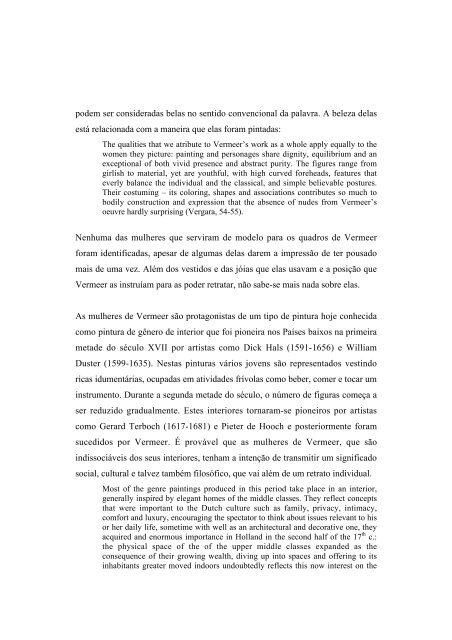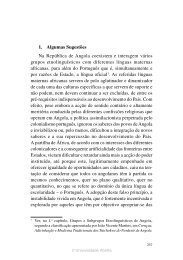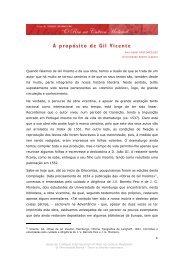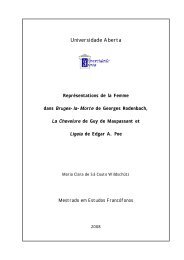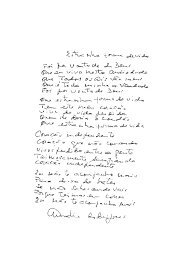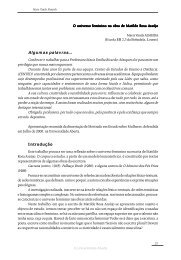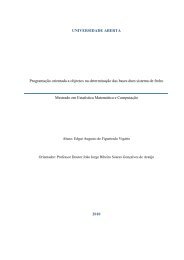Diálogos Transdisciplinares em Girl with a Pearl Earring: a Arte ...
Diálogos Transdisciplinares em Girl with a Pearl Earring: a Arte ...
Diálogos Transdisciplinares em Girl with a Pearl Earring: a Arte ...
You also want an ePaper? Increase the reach of your titles
YUMPU automatically turns print PDFs into web optimized ePapers that Google loves.
pod<strong>em</strong> ser consideradas belas no sentido convencional da palavra. A beleza delas<br />
está relacionada com a maneira que elas foram pintadas:<br />
The qualities that we atribute to Vermeer’s work as a whole apply equally to the<br />
women they picture: painting and personages share dignity, equilibrium and an<br />
exceptional of both vivid presence and abstract purity. The figures range from<br />
girlish to material, yet are youthful, <strong>with</strong> high curved foreheads, features that<br />
everly balance the individual and the classical, and simple believable postures.<br />
Their costuming – its coloring, shapes and associations contributes so much to<br />
bodily construction and expression that the absence of nudes from Vermeer’s<br />
oeuvre hardly surprising (Vergara, 54-55).<br />
Nenhuma das mulheres que serviram de modelo para os quadros de Vermeer<br />
foram identificadas, apesar de algumas delas dar<strong>em</strong> a impressão de ter pousado<br />
mais de uma vez. Além dos vestidos e das jóias que elas usavam e a posição que<br />
Vermeer as instruíam para as poder retratar, não sabe-se mais nada sobre elas.<br />
As mulheres de Vermeer são protagonistas de um tipo de pintura hoje conhecida<br />
como pintura de gênero de interior que foi pioneira nos Países baixos na primeira<br />
metade do século XVII por artistas como Dick Hals (1591-1656) e William<br />
Duster (1599-1635). Nestas pinturas vários jovens são representados vestindo<br />
ricas idumentárias, ocupadas <strong>em</strong> atividades frívolas como beber, comer e tocar um<br />
instrumento. Durante a segunda metade do século, o número de figuras começa a<br />
ser reduzido gradualmente. Estes interiores tornaram-se pioneiros por artistas<br />
como Gerard Terboch (1617-1681) e Pieter de Hooch e posteriormente foram<br />
sucedidos por Vermeer. É provável que as mulheres de Vermeer, que são<br />
indissociáveis dos seus interiores, tenham a intenção de transmitir um significado<br />
social, cultural e talvez também filosófico, que vai além de um retrato individual.<br />
Most of the genre paintings produced in this period take place in an interior,<br />
generally inspired by elegant homes of the middle classes. They reflect concepts<br />
that were important to the Dutch culture such as family, privacy, intimacy,<br />
comfort and luxury, encouraging the spectator to think about issues relevant to his<br />
or her daily life, sometime <strong>with</strong> well as an architectural and decorative one, they<br />
acquired and enormous importance in Holland in the second half of the 17 th c.:<br />
the physical space of the of the upper middle classes expanded as the<br />
consequence of their growing wealth, diving up into spaces and offering to its<br />
inhabitants greater moved indoors undoubtedly reflects this now interest on the


